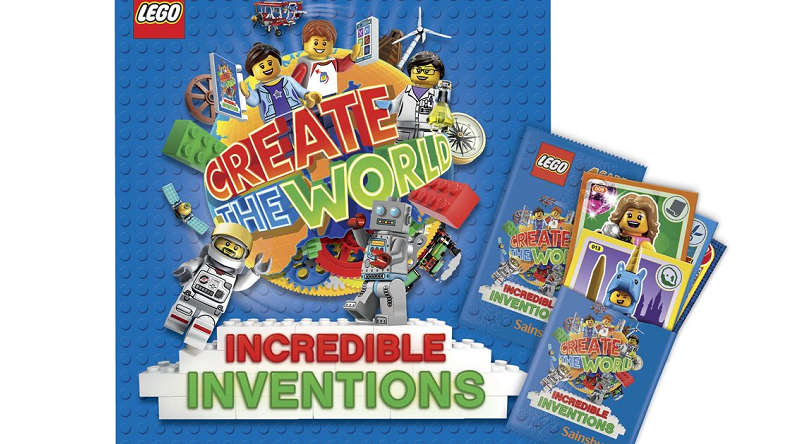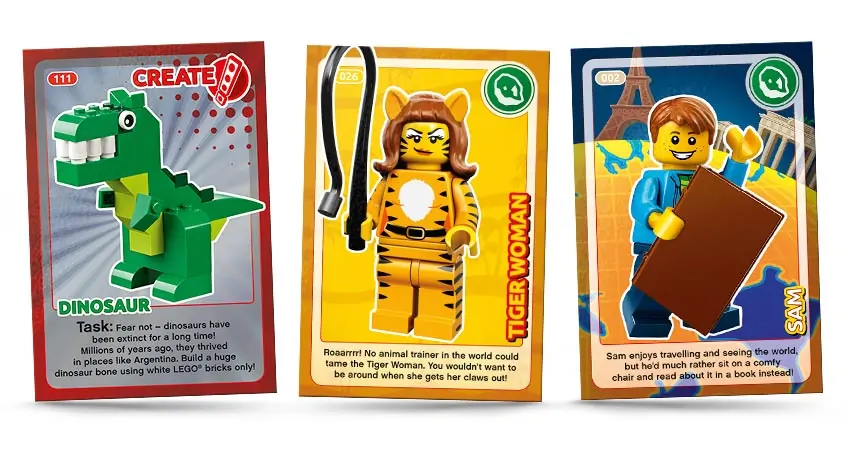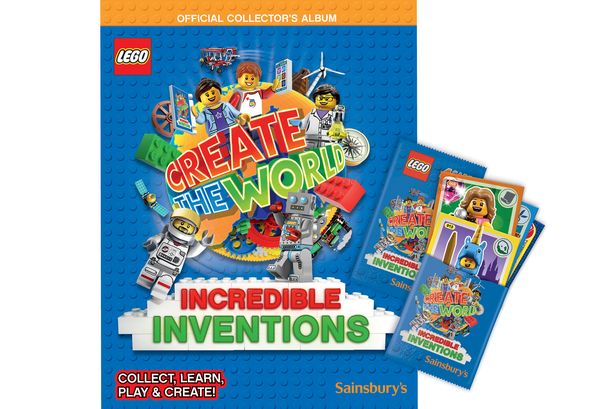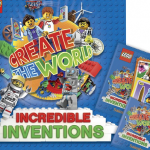LEGO Create the World cards present “overwhelmingly stereotypical” male and female minifigures, research finds
Laura Coffey-Glover, Lecturer in Linguistics at Nottingham Trent University has found that the LEGO Create the World trading cards perpetuate gender stereotypes
Many parents will be familiar with the idea of toy manufacturers working with other businesses, such as supermarket chains and fast food restaurants, to create promotional tie ins. Buy this or eat that, the promotions go, and get a free branded toy.
We focused on one such promotion to investigate the ways it represented gender and gender roles. Our focus was a 2017 promotion run by the much-loved LEGO brand. In this case, customers who spent more than £10 in Sainbury’s supermarkets were given a pack of four LEGO Create the World cards. There were 140 collectable cards in total and each featured a different LEGO minifigure.
Colleagues from the universities of Nottingham, Birmingham City and Reading and I conducted research on this set of Create the World cards. We analysed how the male and female mini-figures were represented via linguistic and visual markers, and we found that these representations, with only very few exceptions, were overwhelmingly stereotypical.
We found that the use of colour on the cards, for example, conformed to traditional stereotypes, with the vast majority of female minifigure cards featuring shades of pink. There were also important visual markers of gender difference on the mini-figure bodies: only male minifigures were shown with facial hair, and the women with elongated eyelashes, make up and narrowed waists – even those that are fantastical non-human figures, such as “Lady Cyclops” and “Alien Villainess”. Interestingly, only men were shown with visual indicators of age, such as wrinkles and grey hair, arguably implying that women must remain youthful and attractive.
Female characters were also marked as different from men via their names, which featured modifying terms, such as “lady” (as in “Lady Robot”), or the word endings “-ess” (as in “Alien Villainess”) and “-let” (as in “Hollywood Starlet”). These forms mean that women are linguistically differentiated from the male figures – there is no “Man Robot”, for example, potentially suggesting that robots are ordinarily male.
Markers matter
The female minifigures were also more likely to be described in terms of their appearance than, say, intelligence. Even “The Queen” (a figure of power and authority) is described according to the clothes she wears:
It’s all well and good being the Queen, but she would gladly trade her royal robes for jeans and a t-shirt!
When it comes to the kinds of roles assigned to the minifigures, the male characters were more often associated with danger or manual labour, such as the “Heroic Knight”, “Gangster”, “Plumber” and “Decorator”. The male minifigures were also more likely to carry objects that can attack, cut or fix, such as the Heroic Knight’s sword, the Butcher’s knife or the Mechanic’s spanner. They were also described on the cards using language that implies (heroic) action: “The Janitor is here to save the day and mop up the mess in no time,” while the Plumber “will take care of it – he knows all the twists and turns of the pipes!”
Female minifigures, however, were given fewer roles that could be described as occupations; their roles in this earlier set of cards are mainly concerned with entertainment, such as the “Disco Diva”, “Flamenco Dancer” and “Hula Dancer”. Alternatively, they were given roles associated with the traditional notion of women as care-givers, such as the “Nurse”. There was also a “Bride” (but no Groom), who “is all dressed up for her big day! All she needs now is someone to marry.”
The fact that the Bride is described in terms of appearance, rather than action, gives the impression that she is the passive recipient of a male suitor. All of this gives the overall impression that it is mainly men, not women, who can do useful things in the world.
Just toys?
The question, of course, is whether all of this matters. After all, these are “only” children’s toys, and critics may argue that we are taking this all too seriously. Research across the social sciences, however, has shown time and time again that playing with toys is one of the primary ways that children learn to interact with others and gain a sense of their place in the world.
We argue, therefore, that toy products are an important subject for critical analysis. If the toys we give to young girls and boys place limits on what they are “allowed” to be in society, how can we hope to encourage more women to enter STEM (Science Technology Engineering and Mathematics) professions, for example, or to promote the idea that it’s OK for men to have caring responsibilities?
At the time of writing, a similar LEGO Create the World promotion was again running in Sainsbury’s. While we have yet to research the characters portrayed on these new cards, we should remember that toy manufacturers have the opportunity to shape the lives of young children in positive ways. Since toys are an important facilitator of education, it is imperative that they begin to take greater responsibility for doing so.
LEGO sets are available now at shop.LEGO.com. You can help support Brick Fanatics’ work by using our affiliate links.
This article was originally published at The Conversation and is reproduced with permission.
The research featured in this article was a collaboration between Dr Jai Mackenzie (University of Nottingham), Dr Laura Coffey-Glover (Nottingham Trent University), Dr Mark McGlashan (Birmingham City University) and Dr Sophie Payne (University of Reading).








